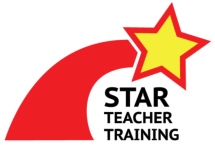When I first started teaching ESL years ago I often made a common mistake during my instructions – perhaps you can relate. I’d distribute my handouts to my students and start talking only to find that they weren’t listening. They were instead focused on my handout and missing the directions. I’d have to demand their attention, repeat myself, and I’d often end up upset. I was undermining my activities, classroom management, and sanity all at the same time.
Preventing Chaos
It took me a while to figure out that I needed to chest the materials the students would use. Chesting is the simple technique of holding up your materials (book, handout, etc.) to your chest during instructions and before you distribute them to students. This technique continues the focus of everyone’s attention on you, which is crucial during instructions. Distributing materials early distracts students by giving them something else important to look at. Children aren’t good at splitting their attention between their eyes and ears; they need to use both on the same target to effectively concentrate.

It sounds simple and obvious, but I can tell you from countless observations and experience that VYL and YL ESL teachers often forget it. For example, I watched a teacher’s Grade 1 class descend into chaos when they passed out a simple Coloring Dictation paper without chesting and giving instructions beforehand. Students started grabbing their crayon boxes, talking excitedly, coloring pictures however they wanted, and completely ignoring the teacher. It took a lot of effort and several minutes to get the students’ attention back, but by then several students had already colored several of their pictures.
Tips for Chesting during instructions:
- Describe the materials with basic sentences for the students. For example “Here are five questions,” or “You can see pictures of eight boys and girls. You can see their names, too. There’s James…”
- Make sure everyone, including students to your sides can see the materials you’re chesting. It doesn’t do them any good if they can’t see what you’re talking about.
- In extra large classes I sometimes make an extra large copy to chest so students in the back can see.
Instructions Staging:
- Ready: Get yourself and your materials ready and within easy reach
- Attention: Use a practiced signal to center your students’ attention on yourself
- Chest: Hold up the important materials to your chest for everyone to see
- …
What do you think is the next step in giving instructions?
Do you have any experience with instructions going haywire? Share your experiences below.






